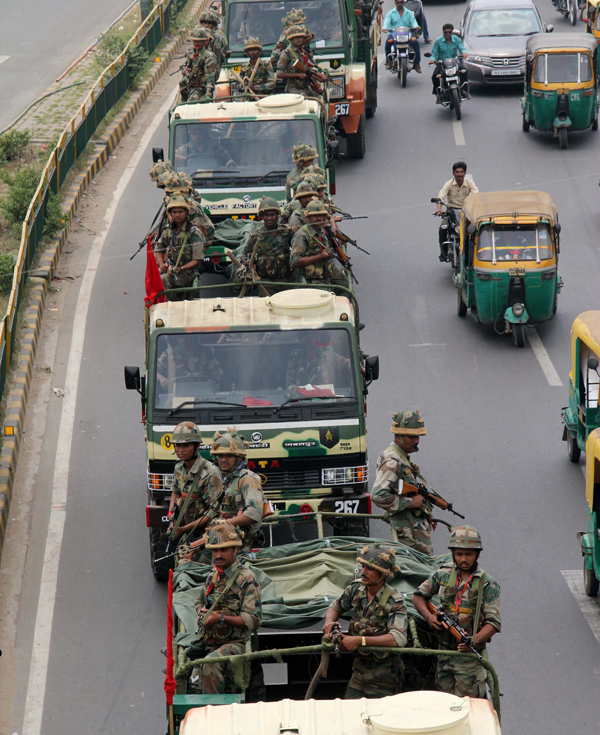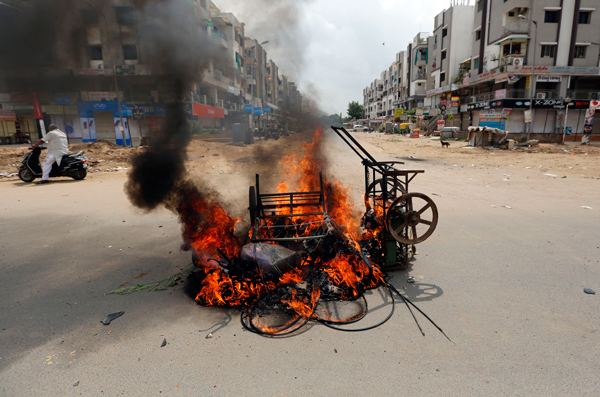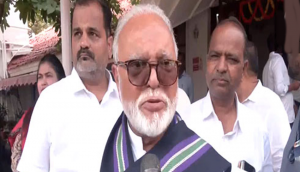The question of Rajdharma: how the Army brought Gujarat under control

Peace returns
- The Patel community was inflamed after the leader of its agitation was detained by the police
- After a couple of days of violence and arson, peace has returned to Gujarat
- The Army conducted flag marches in Ahmedabad and other cities
The contrast
- In 2002, it had taken the Army and RAF several days to bring mobs under control
- There were allegations that back then, the state govt hadn\'t actively helped the forces
- The Patel agitation also pricks the balloon of Gujarat\'s development claims
It was police high-handedness that sparked off incidents of arson and violence after the peaceful completion of the Patel community's rally in Ahmedabad on 25 August.
It took Army five flag marches in Ahmedabad, and several more in other cities, along with the deployment of the Rapid Action Force (RAF), to restore peace in Gujarat.
The demand by the influential and rich Patel community for inclusion in the OBC quota pricks a hole in the inflated balloon of development claims.

Photo: Hanif Sindhi
But, equally, the restoration of peace within 72 hours proves another point - that violent agitators can be tackled effectively if that's what political leadership actively seeks.
The significance of 72 hours
Just why is the time-frame of 72 hours important? That is the time the Gujarat government claims it took to deploy the Army in the state in 2002, after riots broke out following the killing of 58 passengers in the Sabarmati Express fire at Godhra on 27 February.

Photo: Hanif Sindhi
Back then, rioting mobs had a free run for several days before the situation was brought under control by the Army and the RAF.Why is this being brought up, you may wonder. The difference between then and now was the administration's alleged refusal to cooperate with the Army.
True, the deployment of the Army and RAF in riot-affected areas is viewed as the last resort of the administration. But, coming mostly from other states or, at best, from the cantonment areas on the outskirts of cities, Army and RAF platoons need to be guided to specific trouble spots for effective deterrence.
They are unaware of the city's topography and ethnicity of the troublemakers.
The importance of Rajdharma
During the bandh on 26 August, on the western periphery of Ahmedabad, Patel agitators had blocked a passenger train from Rajkot for more than an hour.

Photo: Hanif Sindhi
Half the crowd ran away as soon as the sirens of the six-vehicle convoy preceding the RAF van became audible. The adamant youngsters, too, left the railway track as soon as RAF personnel alighted from their van and started walking towards them.
Army flag marches in Ahmedabad and other cities, and the deployment of the RAF, have restored peace in Gujarat
In contrast, the Army was not guided to trouble spots during the riots in 2002. Instead, Army contingents were handed over the Municipal Corporation's garbage trucks for patrolling, without much local assistance.
As a result, the mayhem continued for days, leading to a situation when then-Prime Minister Atal Bihari Vajpayee had to advise then-CM Narendra Modi to observer 'Rajdharma'.
Quizzed about it, Vajpayee had himself explained the essence of 'Rajdharma' as 'not to discriminate between citizens on the basis of caste, creed or faith'.
One wonders whether such advice was offered, or even necessary this time.
Spare a thought for rural Patels
If the same 'Rajdharma' analogy is applied in the larger context, Patel agitators would not have felt the need to demand reservations in educational institutions and government jobs.
Irrespective of who instigated the Patels, or whether they really do need state support for livelihood, the fact remains that nearly a million youths from the forward (read USA)-looking community, riding motorbikes and flaunting smartphones, seriously believe they have been left out.
That's proof enough that the 'Rajdharma' principle has not been followed at some level.
An average Patel, who owns farm land in the village and also an industry, bungalow and swanky car in the city, may be a thousand times better off than an average OBC daily-wage labourer.
But a half-educated rural Patel youth sharing ancestral land with three or more siblings may have legitimate aspirations for a government job in the nearby town.
That aspiration might have drawn at least half of the million-strong Patel crowds which gathered at the GMDC ground to demand reservation in jobs and professional courses.
The views expressed here are author's own and do not necessarily reflect those of the organisation.
First published: 27 August 2015, 11:54 IST





![BJP's Kapil Mishra recreates Shankar Mahadevan’s ‘Breathless’ song to highlight Delhi pollution [WATCH] BJP's Kapil Mishra recreates Shankar Mahadevan’s ‘Breathless’ song to highlight Delhi pollution [WATCH]](https://images.catchnews.com/upload/2022/11/03/kapil-mishra_240884_300x172.png)

![Anupam Kher shares pictures of his toned body on 67th birthday [MUST SEE] Anupam Kher shares pictures of his toned body on 67th birthday [MUST SEE]](https://images.catchnews.com/upload/2022/03/07/Anupam_kher_231145_300x172.jpg)






